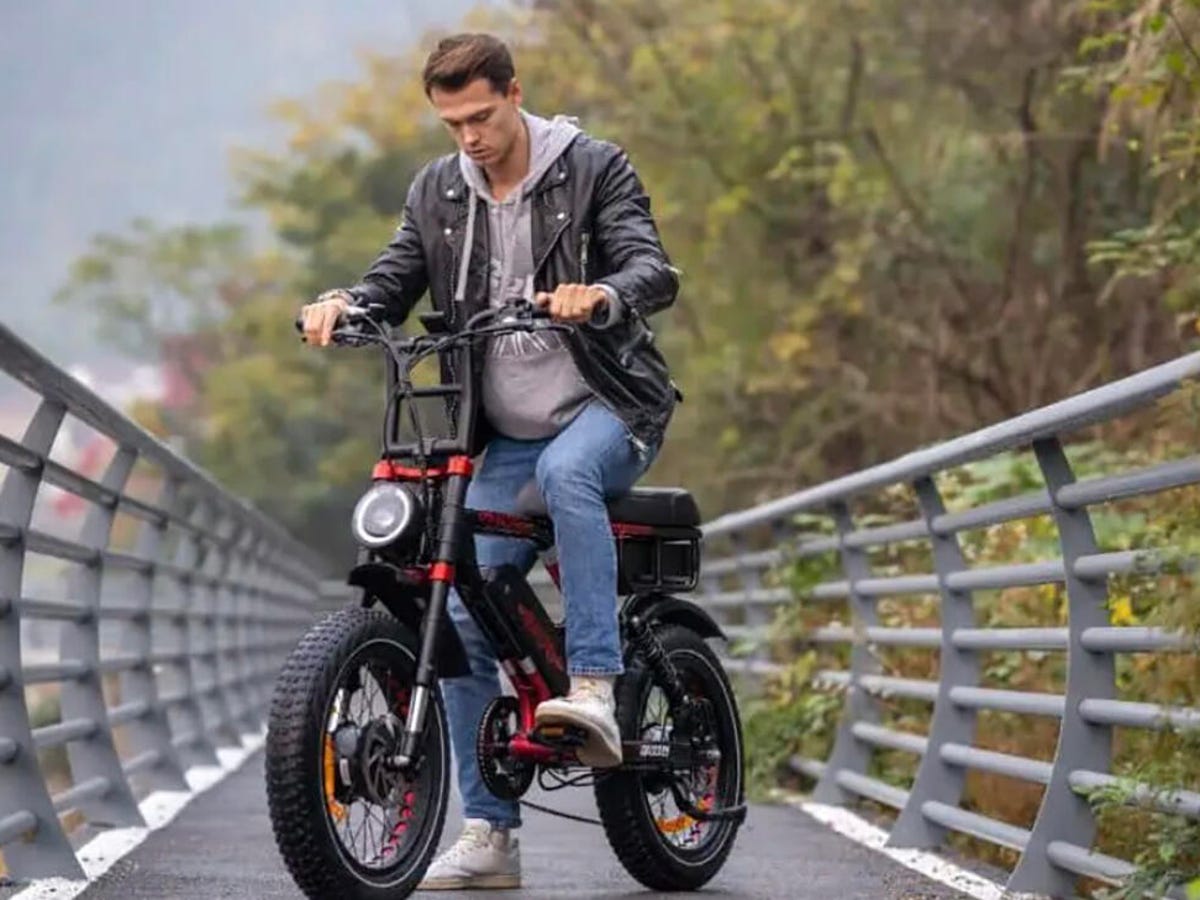Everything About Electric Bicycle: Exploring Attributes, Benefits, and Innovations
Electric bikes, or e-bikes, represent a significant development in individual transport, blending conventional biking with sophisticated innovation. Continuous advancements in e-bike innovation assurance to reshape the landscape of urban wheelchair.
What Is an Electric Bicycle?
Specifying an electrical bike entails recognizing its fundamental components and performances. An electrical bike, generally described as an e-bike, incorporates standard bike mechanics with an electric propulsion system. This system usually consists of a battery, a motor, and a controller, which operate in tandem to offer support during pedaling.
The motor, typically situated in the center of the wheels or installed on the framework, uses varying levels of power aid, allowing motorcyclists to deal with inclines and longer ranges effortlessly. Best Electric Bicycle. The battery, an essential aspect, shops energy that powers the motor, and its capacity directly influences the range and performance of the e-bike. Most e-bikes feature a rechargeable lithium-ion battery, recognized for its performance and durability
Furthermore, the controller controls the interaction in between the cyclist's input and the electric motor's result, enabling a seamless riding experience. E-bikes might additionally include features such as pedal-assist and throttle control, which offer motorcyclists with choices for how they engage the electrical power. In general, electrical bikes represent a mix of typical biking and modern technology, providing a lasting choice for personal transportation.
Trick Features of E-Bikes
Electric bicycles come outfitted with a range of essential features that boost their usability and allure. One of the most substantial components is the electrical motor, which differs in power result, normally ranging from 250W to 750W. This electric motor provides aid to the cyclist, making pedaling much easier, particularly on slopes.

The control system, often comprising a display screen panel, allows individuals to monitor rate, battery level, and help modes. Several e-bikes additionally feature pedal-assist and throttle modes, allowing bikers to choose their recommended degree of support.
In enhancement, e-bikes are equipped with regenerative stopping systems that capture power during braking, improving battery performance. Structure style and materials differ, providing alternatives for various riding designs, from commuter to hill biking. Incorporated illumination and safety attributes, such as reflective tires and durable brakes, contribute to a more secure riding experience.
Benefits of Electric Bicycles
The comfort and flexibility of electrical bicycles make them a progressively popular option for travelers and recreational motorcyclists alike. Among the main benefits of e-bikes is their capacity to substantially reduce travel time, specifically in city atmospheres where traffic jam is prevalent. The electrical help enables riders to keep greater speeds with less initiative, making daily commutes much more reliable.
Along with conserving time, electric bicycles promote a much healthier way of living. They motivate physical task while reducing stress on the rider, making cycling obtainable to a wider group, including those who may be prevented by typical cycling due to physical fitness degrees or physical constraints.
E-bikes additionally offer economic advantages. They are typically less costly to run than vehicles, with lower upkeep expenses and no gas expenditures. In addition, many regions offer incentives for electric bike acquisitions, including to look at this website their price.
Ecological advantages are significant. By urging cycling over driving, e-bikes contribute to minimized carbon exhausts and much less web traffic contamination, lining up with sustainable transport goals. Overall, the multifaceted benefits of electrical bikes make them an appealing option for contemporary flexibility.
Innovations in E-Bike Modern Technology
Current developments in e-bike technology have transformed the cycling experience, improving safety, performance, and customer convenience. Among one of the most significant innovations is the growth of wise e-bikes geared up with incorporated GPS and mobile connection. These features allow users to track their experiences, discover optimum paths, and even secure their bikes remotely, boosting safety and security and convenience.
One more noteworthy advancement is the improvement of battery innovation. Lithium-ion batteries have actually become lighter, a lot more efficient, and with the ability of longer varieties, attending to among the main concerns of e-bike individuals-- minimal distance. In addition, regenerative braking systems are currently being incorporated, which charge the battery during descents, prolonging the bike's operational variety.
Moreover, enhancements in electric motor technology, such as mid-drive and hub motors, offer much better torque and performance, resulting in a much more smooth riding experience (Best Electric Bicycle). Improved safety functions, consisting of integrated lights, anti-lock braking systems, and innovative suspension systems, contribute to rider safety and security and convenience on various terrains
Collectively, these advancements not only boost the functionality of e-bikes however additionally advertise eco-friendly transportation, making them a progressively eye-catching option for commuters and leisure motorcyclists alike.
Picking the Right E-Bike
Choosing the proper e-bike entails understanding individual demands and preferences, especially taking into account the advancements in technology that have transformed the market. When picking an e-bike, consider your primary usage: commuting, recreational riding, or off-road adventures. Each group features distinct designs and specs to accommodate certain demands.
Following, review the electric motor power and battery ability. E-bikes typically range from 250W to 750W motors, impacting rate and hill-climbing capacities. Battery life is critical; a greater ability (gauged in watt-hours) will certainly offer prolonged varieties, permitting longer experiences without regular charging.

Final Thought

Electric bicycles, or e-bikes, represent a significant advancement in individual transport, blending standard biking with innovative innovation. An electric bicycle, commonly referred to as an e-bike, integrates conventional bike mechanics with an electrical propulsion system. The majority of e-bikes include a rechargeable lithium-ion battery, recognized for its performance and long life.
E-bikes may additionally consist of functions such as pedal-assist and throttle control, which provide bikers with options for how they engage the electric power. The diverse features and benefits of e-bikes, combined with ongoing technologies in innovation, solidify their duty as a sustainable and effective mode of travel.